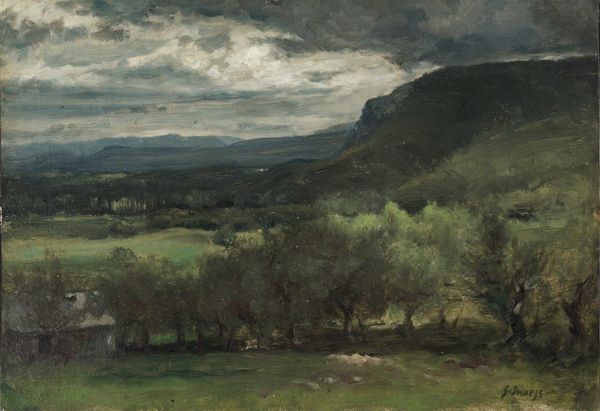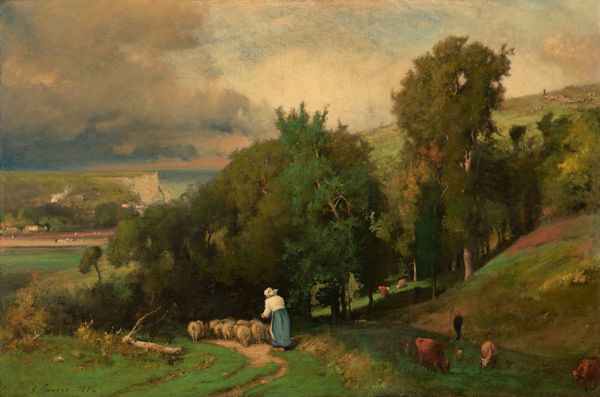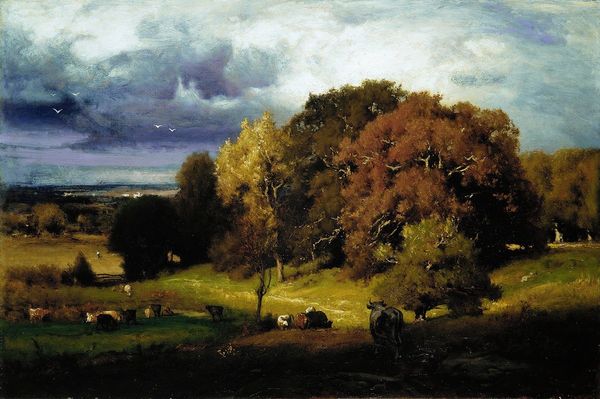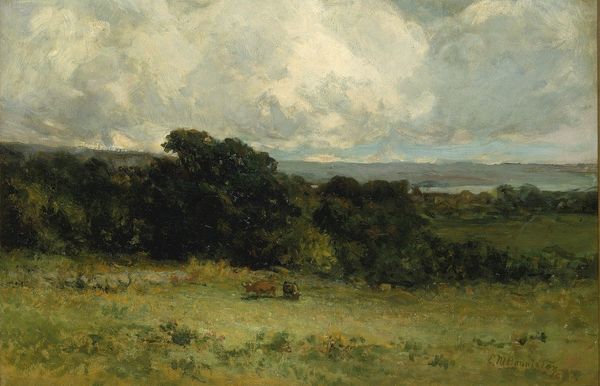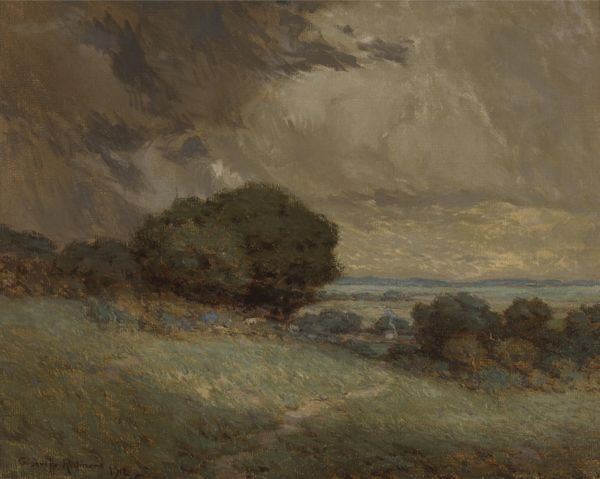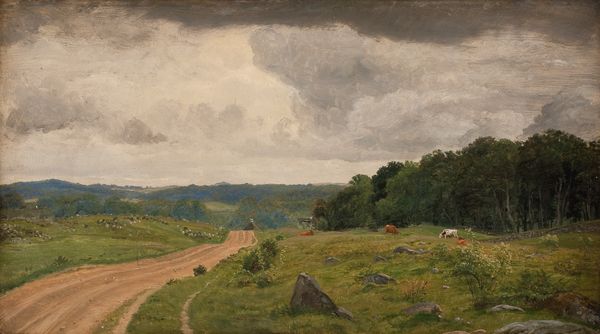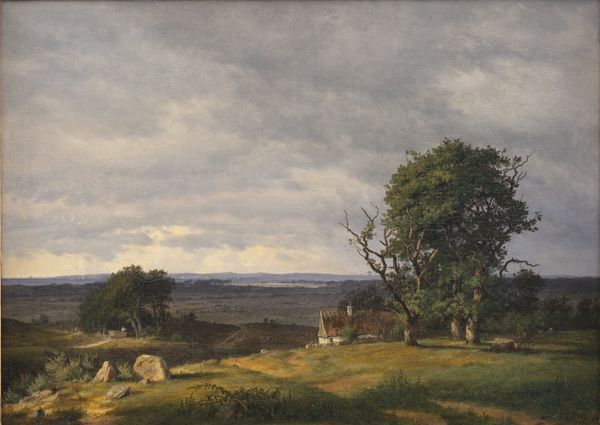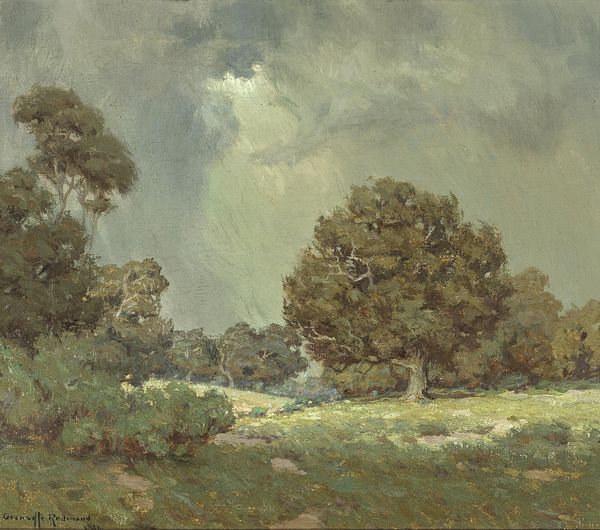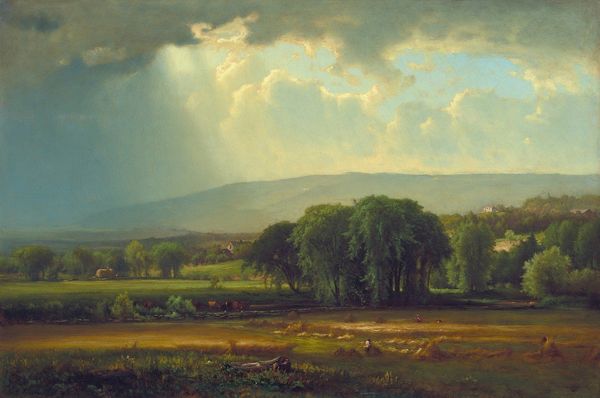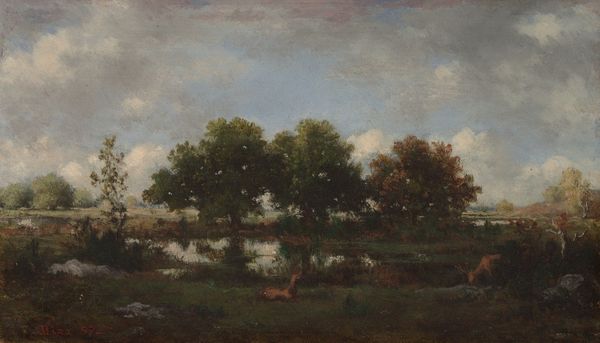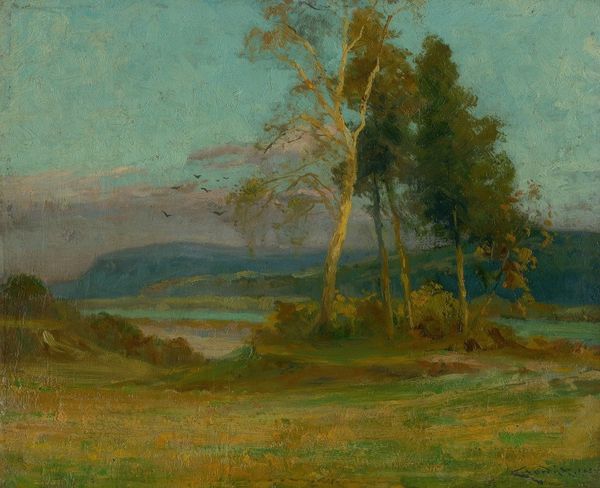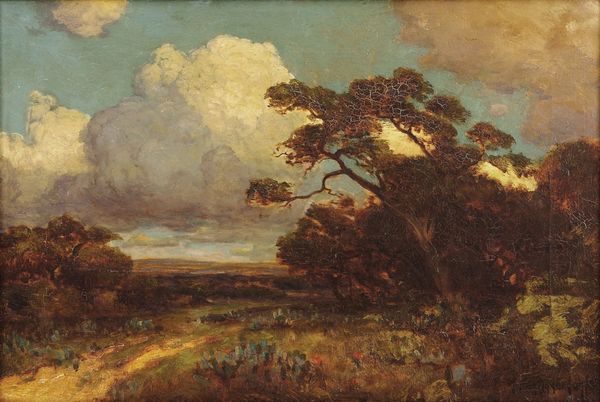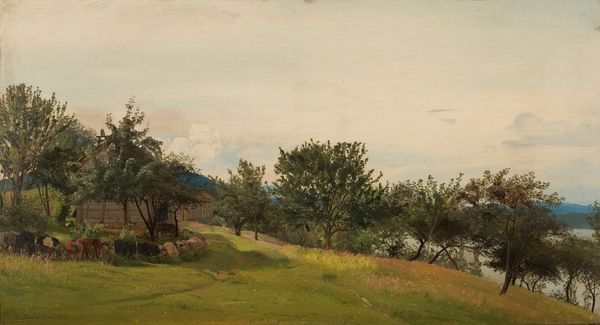
Copyright: Public Domain: Artvee
Curator: We're looking at "The Coming Storm," painted by George Inness in 1878. It's an oil on canvas. What are your initial thoughts? Editor: Brooding. Ominous, even. The contrast between the vibrant green field and that heavy, dark sky is really striking. It creates a palpable tension, a sense of impending change. Curator: Precisely. Inness masterfully balances the realism of the scene with a certain romantic sensibility. Note how the composition directs the eye, beginning with the figures grazing and moving towards the distant, veiled horizon. Editor: Grazing... like there's still time for pleasure, and labor before what’s on its way interrupts this daily grind? The darkening sky speaks of disruptive forces that shift from stability. We have an awareness today, obviously of ecological crisis which might shape that reading. It seems particularly pertinent when viewed through a contemporary lens, doesn't it? Curator: One might even read those figures within the landscape as almost allegorical to human existence. Notice, too, how Inness handles light and shadow, employing tonalist techniques to create depth and atmosphere. He reduces details and concentrates on unified color schemes. Editor: Yes, the limited palette amplifies the emotional impact. The artist definitely wants us to *feel* the weight of the storm, and to understand ourselves as beings exposed. I wonder what role faith played for Inness in constructing this view, considering his religious convictions at the time? Curator: His spiritualism certainly informed his artistic practice, influencing him to portray not only the visual reality but its symbolic counterpart in nature, but without too much narrative specificity. "The Coming Storm" also presents Inness' command of the plein-air painting technique. Editor: This speaks volumes about shifting relations with the American landscape as settlers and industrialists alike moved farther West to continue seizing native lands and expand burgeoning settlements. A romantic view and also one fraught with environmental disruption. Thanks for sharing your insight. Curator: And thank you; your reflections gave the piece much food for thought!
Comments
No comments
Be the first to comment and join the conversation on the ultimate creative platform.
